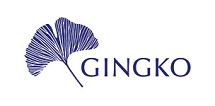Nine essays first presented at the Historians of Islamic Art Association’s seventh biennial symposium, entitled “Regime Change.”
The essays collected in this volume highlight some of the regimes of thought and changing trends that structure the field of Islamic art history. The authors present new research exploring the intentions of patrons, the agency of craftsmen, and their responses to previous artistic production, thereby allowing artifacts and monuments to be set within their historical, social, and artistic contexts.
In their contributions, Annabel Teh Gallop, Dmitry Bondarev, and Umberto Bongianino discuss significant changes to Qur’an production due to dynastic and political regime changes in Sumatra and the Malay Peninsula, as well as in Borno and Morocco in Africa. Corinne Mühlemann looks at changes in the role and status of designers and weavers making silk in Khurasan in the post-Mongol period. Lisa Golombek, Michael Chagnon, and Farshid Emami explore Safavid art and architecture, focusing on the material and sensorial qualities of a group of tiled arch panels tiles with narrative scenes, a delicately painted vase, and the clocks of the main square of seventeenth-century Isfahan. Regime change also comes about through technological shifts, and Ulrich Marzolph and Yasemin Gencer ask how the rise of photography and new printing techniques shaped the production, exchange, and transmission of images in Iran and Turkey.
The essays collected in this volume highlight some of the regimes of thought and changing trends that structure the field of Islamic art history. The authors present new research exploring the intentions of patrons, the agency of craftsmen, and their responses to previous artistic production, thereby allowing artifacts and monuments to be set within their historical, social, and artistic contexts.
In their contributions, Annabel Teh Gallop, Dmitry Bondarev, and Umberto Bongianino discuss significant changes to Qur’an production due to dynastic and political regime changes in Sumatra and the Malay Peninsula, as well as in Borno and Morocco in Africa. Corinne Mühlemann looks at changes in the role and status of designers and weavers making silk in Khurasan in the post-Mongol period. Lisa Golombek, Michael Chagnon, and Farshid Emami explore Safavid art and architecture, focusing on the material and sensorial qualities of a group of tiled arch panels tiles with narrative scenes, a delicately painted vase, and the clocks of the main square of seventeenth-century Isfahan. Regime change also comes about through technological shifts, and Ulrich Marzolph and Yasemin Gencer ask how the rise of photography and new printing techniques shaped the production, exchange, and transmission of images in Iran and Turkey.
160 pages | 150 color plates | 9.57 x 9.65 | © 2024
Art: Middle Eastern, African, and Asian Art
Religion: Islam
Reviews
Table of Contents
1. ISLAMIC ART IN THE THIRD MILLENNIUM:
FROM REGIMES TO HORIZONS
Christiane Gruber and Bihter Esener 6
2. MIGRATING MANUSCRIPT ART: THE ‘SULAWESI
DIASPORA GEOMETRIC’ STYLE OF QUR?ANIC
ILLUMINATION
Annabel Teh Gallop 14
3. SHIFTING REGIMES, RESHAPING MANUSCRIPTS:
THE DISAPPEARANCE OF ANNOTATED QUR?ANS
IN BORNO
Dmitry Bondarev 32
4. THE RE-ENDOWMENT OF ALMOHAD QUR?ANS
UNDER THE EARLY MARINIDS (CA. 1250–1300 CE)
Umberto Bongianino 48
5. THE WEAVER’S SIGNATURE? THE DIVISION OF
LABOUR IN THE PRODUCTION OF LAMPAS
WOVEN SILKS
Corinne Mu¨hlemann 64
6. POINTS OF VISION: RECEPTION OF
A LATE SAFAVID TILED ARCADE
Lisa Golombek 80
7. INTERPRETING A LATER SAFAVID VASE:
BETWEEN MATERIAL, OBJECT AND IMAGE
Michael Chagnon 96
8. SENSING TIME AND SOUND IN SAFAVID ISFAHAN:
THE CLOCKS OF THE MAYDAN-I NAQSH-I JAHAN
Farshid Emami 110
9. LITHOGRAPHY AND ITS IMPACT ON THE
ART OF ILLUSTRATION IN IRAN
Ulrich Marzolph 128
10. MUSTAFA KEMAL, PHOTOGRAPHY AND IMAGE
IN 1920S TURKISH MEDIA
Yasemin Gencer 144
AUTHOR BIOGRAPHIES 160
FROM REGIMES TO HORIZONS
Christiane Gruber and Bihter Esener 6
2. MIGRATING MANUSCRIPT ART: THE ‘SULAWESI
DIASPORA GEOMETRIC’ STYLE OF QUR?ANIC
ILLUMINATION
Annabel Teh Gallop 14
3. SHIFTING REGIMES, RESHAPING MANUSCRIPTS:
THE DISAPPEARANCE OF ANNOTATED QUR?ANS
IN BORNO
Dmitry Bondarev 32
4. THE RE-ENDOWMENT OF ALMOHAD QUR?ANS
UNDER THE EARLY MARINIDS (CA. 1250–1300 CE)
Umberto Bongianino 48
5. THE WEAVER’S SIGNATURE? THE DIVISION OF
LABOUR IN THE PRODUCTION OF LAMPAS
WOVEN SILKS
Corinne Mu¨hlemann 64
6. POINTS OF VISION: RECEPTION OF
A LATE SAFAVID TILED ARCADE
Lisa Golombek 80
7. INTERPRETING A LATER SAFAVID VASE:
BETWEEN MATERIAL, OBJECT AND IMAGE
Michael Chagnon 96
8. SENSING TIME AND SOUND IN SAFAVID ISFAHAN:
THE CLOCKS OF THE MAYDAN-I NAQSH-I JAHAN
Farshid Emami 110
9. LITHOGRAPHY AND ITS IMPACT ON THE
ART OF ILLUSTRATION IN IRAN
Ulrich Marzolph 128
10. MUSTAFA KEMAL, PHOTOGRAPHY AND IMAGE
IN 1920S TURKISH MEDIA
Yasemin Gencer 144
AUTHOR BIOGRAPHIES 160

